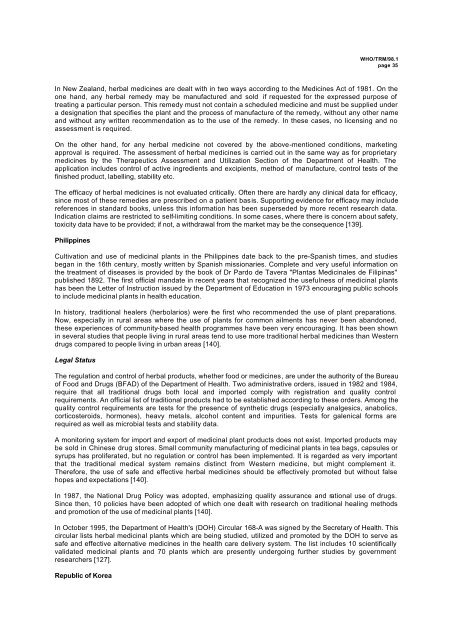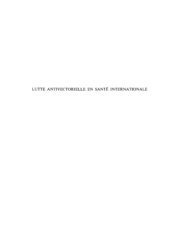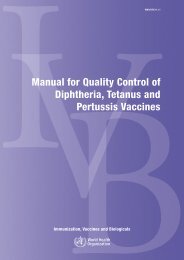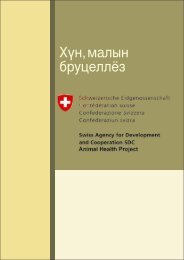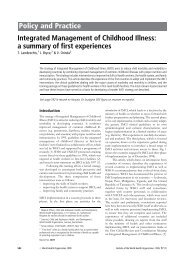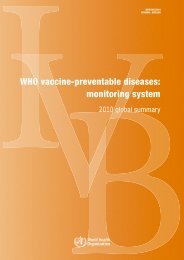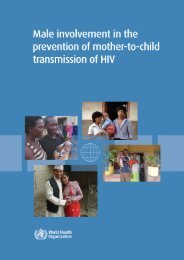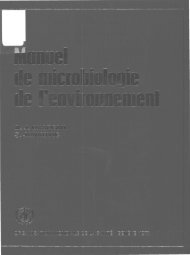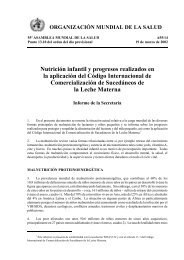Regulatory Situation of Herbal Medicines A worldwide Review
Regulatory Situation of Herbal Medicines A worldwide Review
Regulatory Situation of Herbal Medicines A worldwide Review
Create successful ePaper yourself
Turn your PDF publications into a flip-book with our unique Google optimized e-Paper software.
WHO/TRM/98.1page 35In New Zealand, herbal medicines are dealt with in two ways according to the <strong>Medicines</strong> Act <strong>of</strong> 1981. On theone hand, any herbal remedy may be manufactured and sold if requested for the expressed purpose <strong>of</strong>treating a particular person. This remedy must not contain a scheduled medicine and must be supplied undera designation that specifies the plant and the process <strong>of</strong> manufacture <strong>of</strong> the remedy, without any other nameand without any written recommendation as to the use <strong>of</strong> the remedy. In these cases, no licensing and noassessment is required.On the other hand, for any herbal medicine not covered by the above-mentioned conditions, marketingapproval is required. The assessment <strong>of</strong> herbal medicines is carried out in the same way as for proprietarymedicines by the Therapeutics Assessment and Utilization Section <strong>of</strong> the Department <strong>of</strong> Health. Theapplication includes control <strong>of</strong> active ingredients and excipients, method <strong>of</strong> manufacture, control tests <strong>of</strong> thefinished product, labelling, stability etc.The efficacy <strong>of</strong> herbal medicines is not evaluated critically. Often there are hardly any clinical data for efficacy,since most <strong>of</strong> these remedies are prescribed on a patient basis. Supporting evidence for efficacy may includereferences in standard books, unless this information has been superseded by more recent research data.Indication claims are restricted to self-limiting conditions. In some cases, where there is concern about safety,toxicity data have to be provided; if not, a withdrawal from the market may be the consequence [139].PhilippinesCultivation and use <strong>of</strong> medicinal plants in the Philippines date back to the pre-Spanish times, and studiesbegan in the 16th century, mostly written by Spanish missionaries. Complete and very useful information onthe treatment <strong>of</strong> diseases is provided by the book <strong>of</strong> Dr Pardo de Tavera "Plantas Medicinales de Filipinas"published 1892. The first <strong>of</strong>ficial mandate in recent years that recognized the usefulness <strong>of</strong> medicinal plantshas been the Letter <strong>of</strong> Instruction issued by the Department <strong>of</strong> Education in 1973 encouraging public schoolsto include medicinal plants in health education.In history, traditional healers (herbolarios) were the first who recommended the use <strong>of</strong> plant preparations.Now, especially in rural areas where the use <strong>of</strong> plants for common ailments has never been abandoned,these experiences <strong>of</strong> community-based health programmes have been very encouraging. It has been shownin several studies that people living in rural areas tend to use more traditional herbal medicines than Westerndrugs compared to people living in urban areas [140].Legal StatusThe regulation and control <strong>of</strong> herbal products, whether food or medicines, are under the authority <strong>of</strong> the Bureau<strong>of</strong> Food and Drugs (BFAD) <strong>of</strong> the Department <strong>of</strong> Health. Two administrative orders, issued in 1982 and 1984,require that all traditional drugs both local and imported comply with registration and quality controlrequirements. An <strong>of</strong>ficial list <strong>of</strong> traditional products had to be established according to these orders. Among thequality control requirements are tests for the presence <strong>of</strong> synthetic drugs (especially analgesics, anabolics,corticosteroids, hormones), heavy metals, alcohol content and impurities. Tests for galenical forms arerequired as well as microbial tests and stability data.A monitoring system for import and export <strong>of</strong> medicinal plant products does not exist. Imported products maybe sold in Chinese drug stores. Small community manufacturing <strong>of</strong> medicinal plants in tea bags, capsules orsyrups has proliferated, but no regulation or control has been implemented. It is regarded as very importantthat the traditional medical system remains distinct from Western medicine, but might complement it.Therefore, the use <strong>of</strong> safe and effective herbal medicines should be effectively promoted but without falsehopes and expectations [140].In 1987, the National Drug Policy was adopted, emphasizing quality assurance and rational use <strong>of</strong> drugs.Since then, 10 policies have been adopted <strong>of</strong> which one dealt with research on traditional healing methodsand promotion <strong>of</strong> the use <strong>of</strong> medicinal plants [140].In October 1995, the Department <strong>of</strong> Health's (DOH) Circular 168-A was signed by the Secretary <strong>of</strong> Health. Thiscircular lists herbal medicinal plants which are being studied, utilized and promoted by the DOH to serve assafe and effective alternative medicines in the health care delivery system. The list includes 10 scientificallyvalidated medicinal plants and 70 plants which are presently undergoing further studies by governmentresearchers [127].Republic <strong>of</strong> Korea


